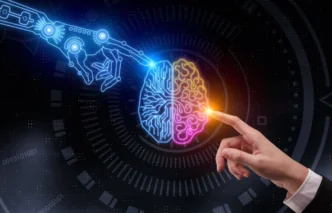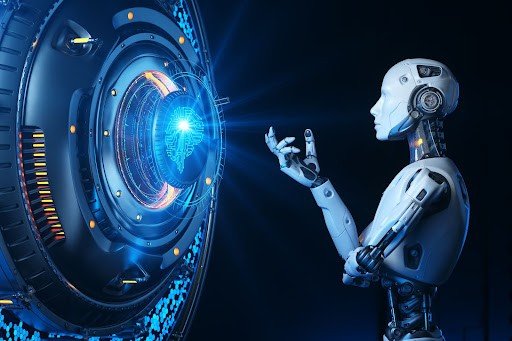Artificial Intelligence (AI) is rapidly transforming every sector of human life, and the gaming industry is no exception. The 21st century has witnessed gaming evolve from basic 2D simulations to immersive 3D experiences powered by virtual and augmented reality (VR/AR).
But while these technologies create compelling visuals and environments, AI algorithms are now taking gaming to the next level by learning from players’ behaviour, building adaptive game logic, and offering personalized experiences.
In this article, I explore how AI, machine learning (ML), deep learning (DL), and the Internet of Things (IoT) are converging to shape the future of interactive gaming, bringing new possibilities and challenges.
AI-Powered Game Logic: Breaking Stereotypes in Gaming
One of the biggest problems in gaming is repetition—games often follow predictable patterns, causing players to lose interest over time. However, AI is changing the game by introducing dynamic logic systems. Machine learning algorithms observe players’ behavior and learn from their past actions, adapting the game to offer fresh experiences each time they return.
This approach is particularly effective in narrative-driven 3D games. Unlike static storylines, AI can adjust the game’s plot based on how players interact with it, making each playthrough unique. For instance:
- The dialogue choices and outcomes can change based on previous player decisions.
- In-game events and challenges can evolve dynamically to match the player’s skill level.
This player-centered adaptability ensures that games remain engaging and exciting, keeping players immersed for longer periods.
AI in Gaming: Techniques Driving the Future of Immersion
Several cutting-edge AI techniques are being applied to enhance player experiences, including:
- Speech Recognition and Gesture Control:
- AI algorithms analyze voice commands and body movements, creating a more natural interaction between players and games.
- Example: VR games now allow players to interact with virtual objects using voice and gestures, eliminating the need for controllers.
- Facial Expression Recognition:
- AI can detect players’ emotions in real-time, modifying gameplay to match the player’s mood.
- For instance, if a player shows signs of frustration, the game could adjust the difficulty level to keep them engaged.
- Physical Interaction with Consoles:
- AI-enabled gaming consoles can sense movements and body position, offering immersive physical experiences. This is especially useful in fitness-based games and e-sports training.
IoT and AI: A Perfect Match for Gaming and Beyond
The Internet of Things (IoT) has also become a game-changer for the gaming industry. With 41.6 billion IoT devices expected to be connected by 2025, the amount of data being generated will reach 79.4 zettabytes (ZB). This data explosion demands intelligent processing, and AI-powered algorithms play a vital role in making sense of it all.
In gaming, IoT networks can enhance user experiences by:
- Synchronizing data across multiple devices (e.g., mobile phones, VR headsets, and gaming consoles).
- Enabling real-time communication between players across the globe.
- Facilitating cloud-based AI gaming platforms, where the game logic evolves dynamically based on IoT data.
Beyond gaming, AI and IoT technologies are making an impact across various sectors like healthcare, transportation, and agriculture by analyzing patterns and predicting outcomes based on vast datasets.
Deep Learning in Gaming: Image Processing and Content Retrieval
Deep learning (DL) plays a crucial role in gaming, especially in the areas of image processing and video analysis. With DL algorithms, games can perform tasks like:
- Image segmentation: Dividing images into distinct regions for better object recognition.
- Image retrieval: Quickly identifying in-game assets based on content-based search queries.
- Morphing and Synchronization: Creating seamless movement synchronization between character animations and voice-over recordings.
This capability is particularly useful in mobile gaming, where quick searches and smooth gameplay are critical. DL algorithms not only enhance visual quality but also enable real-time adjustments, such as dynamic lighting and environmental changes based on player actions.
The Role of 5G in the Future of AI-Driven Gaming
As 5G networks become more widespread, they will revolutionize gaming by enabling ultra-fast connectivity and low-latency gameplay. AI models integrated with 5G networks will deliver:
- Real-time streaming of complex games without performance drops.
- Predictive analytics to forecast player behavior and adapt gameplay accordingly.
- Instant updates and synchronization across devices, providing a seamless gaming experience.
With 5G and AI working in tandem, gaming experiences will become even more immersive and accessible, allowing developers to explore new genres and features.
Challenges and Future Trends in AI-Driven Gaming
While the future looks promising, AI-driven gaming faces certain challenges:
- Data Privacy and Security: With massive amounts of personal data being collected, user privacy must be safeguarded.
- Ethical Concerns: The ability of AI to predict behavior raises questions about manipulation and fairness in gaming.
- Scalability Issues: Ensuring that AI models remain efficient as games grow in complexity can be challenging.
Looking ahead, AI and gaming will continue to evolve with innovations like neural networks, procedural content generation, and metaverse experiences—all offering players more personalized, interactive, and social experiences.
Conclusion:
The integration of AI and gaming marks the beginning of a new era in entertainment. What excites me the most is the potential for adaptive narratives, where each player’s experience is unique and constantly evolving. The days of repetitive missions and predictable challenges will soon be behind us, giving way to immersive, player-driven storytelling.
Moreover, the combination of AI and IoT opens up endless possibilities beyond gaming, influencing industries ranging from healthcare to transportation. As 5G technology expands, the gaming industry will witness exponential growth, delivering experiences we can’t even imagine yet.
However, as developers push the boundaries of what’s possible, ethical considerations must not be overlooked. It’s essential to ensure that AI systems remain fair, transparent, and respectful of user privacy. If handled responsibly, AI-powered gaming can redefine the way we engage with technology and entertainment as a whole.











